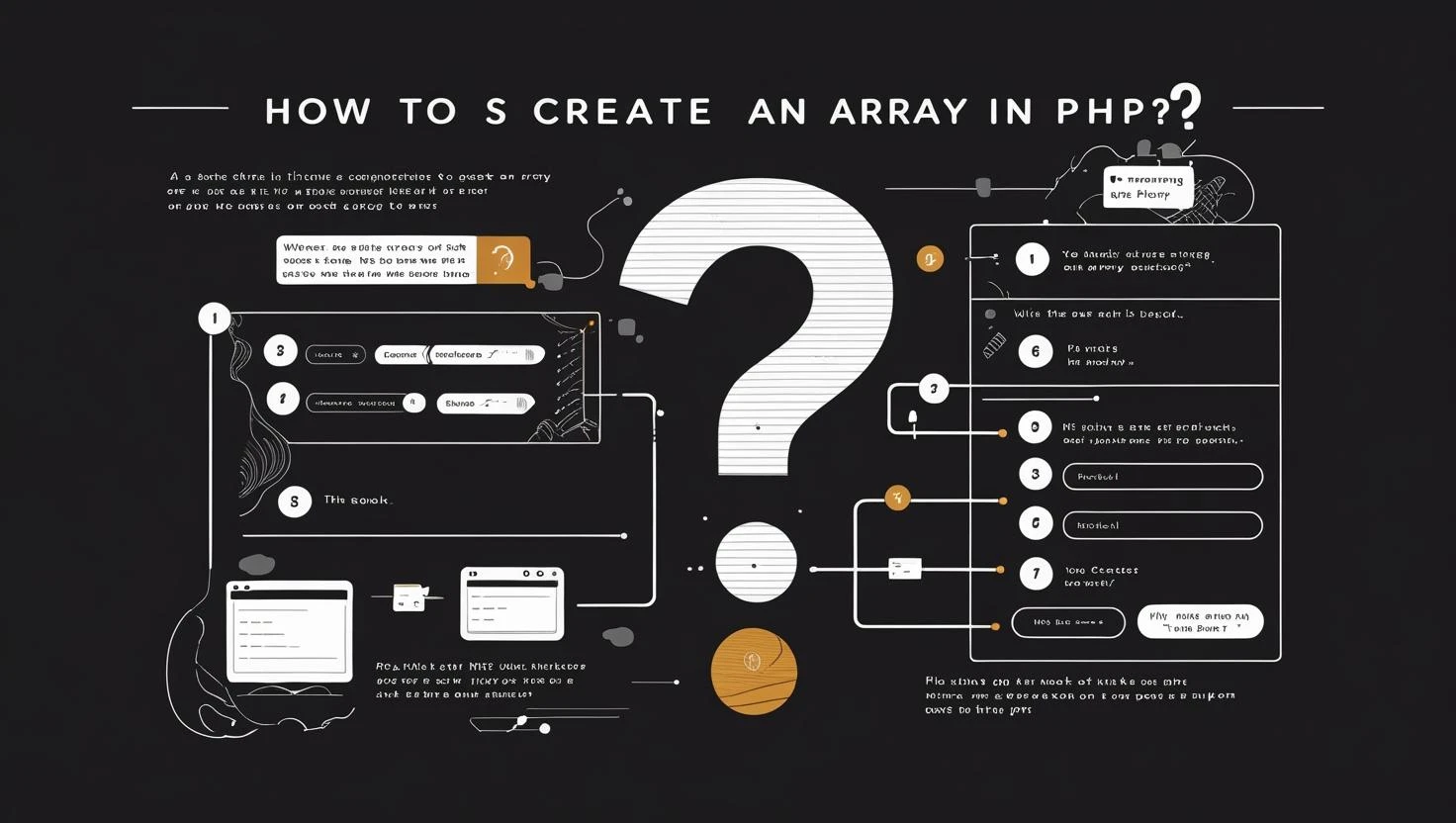How to Create Array in PHP, Is Array PHP? Discover Easy Steps

Hello, friend! I’m Somen — a PHP developer who’s been helping beginners and juniors get comfortable with code for years. If you’re just stepping into PHP or brushing up your basics, you’re in a great place. Today, I’ll walk you through one of the building blocks of PHP: arrays. If you’ve ever heard someone ask, “How to create array in PHP?” or “Is array PHP?”, don’t worry — by the end of this guide, you’ll have all the answers, and you’ll see just how simple and fun arrays can be. Let’s unlock this topic step by step, with plenty of examples along the way!
What This Is About
Before we jump into code, let me set the stage. Imagine you have a box in your room labeled “Toys.” Inside, you can keep cars, dolls, or board games—all in one container. In PHP, an array is like that box: it lets you store multiple values (toys) in a single variable (the box). This saves time, space, and keeps things tidy. When I first started coding, learning arrays opened up endless possibilities, especially for working with lists, data from forms, or database results.
Is Array PHP? The Easy Answer
You might see the phrase is array PHP floating around. Simply put, arrays are one of PHP’s built-in data types. This means PHP understands arrays natively, just like it understands numbers (int), words (string), or yes/no values (boolean). Arrays are baked right into the language, so you don’t need any special add-ons or libraries to use them.
Why PHP Devs Should Care About Arrays
As a PHP developer, arrays are your trusty toolbox for almost everything: wanting to process a user’s shopping cart, store weekdays, or handle scores for a game? Arrays make your code cleaner and more flexible. Instead of creating six separate variables, you create one array.
| Scenario | Using Variables | Using Arrays |
|---|---|---|
| Store one or two items | $a = "Apple"; |
// Overkill here! |
| Store a list (e.g., 5 fruits) | $a = "Apple"; |
$fruits = array("Apple", "Banana", "Orange"); |
| Process form submissions with many fields | Messy, lots of code | Simple, easy iteration with arrays |
If you want to grow your skills as a PHP developer, mastering arrays will make you faster and your code more powerful. Plus, most frameworks and real-world applications lean heavily on arrays, so it’s a must-know.
How to Create Array in PHP: Step-by-Step
Ready to see arrays in action? Let’s go step-by-step on how to create array in PHP. I’ll keep it super beginner-friendly, like I wish someone had done for me when I was new!
Step 1: The Basic Way — Numeric Arrays
A numeric array uses numbers as keys (like address labels on your box compartments), starting from 0 by default. Here’s how you create one:
<?php
$colors = array("Red", "Green", "Blue");
// Accessing colors
echo $colors[0]; // Prints "Red"
?>In this code, $colors is the name of our array, and each item is accessed using its number inside square brackets. Remember: PHP counting starts from zero!
Step 2: Associative Arrays — Add Labels to Your Data
Want to give each item a custom label instead of just numbers? Use associative arrays. This is great for things like storing a person’s details:
<?php
$person = array(
"name" => "Somen",
"age" => 30,
"job" => "PHP Developer"
);
// Accessing by key
echo $person["name"]; // Prints "Somen"
?>Now, instead of remembering if the name is at position 0 or 1, you can just ask for it by label!
Step 3: Short Array Syntax (Modern & Simple)
From PHP 5.4 onwards, there’s an even slicker way to build arrays: just use square brackets:
<?php
$fruits = ["Apple", "Banana", "Cherry"];
$profile = [
"username" => "matseotools",
"level" => "beginner"
];
?>The result is the same, but it looks cleaner. Most modern PHP code uses this style.
Step 4: Multidimensional Arrays — Arrays Inside Arrays
What if you want to store more complex data, like a list of people, each with their name and email? That’s where multidimensional arrays come in:
<?php
$users = [
["name" => "Alice", "email" => "alice@example.com"],
["name" => "Bob", "email" => "bob@example.com"]
];
// Access Bob's email
echo $users[1]["email"]; // Prints "bob@example.com"
?>Just think of arrays nested inside other arrays, like boxes within boxes!
Conclusion
And there you have it — the essentials of arrays in PHP! If you ever wondered is array PHP, now you know: arrays are fundamental to PHP and every developer’s toolkit. They help you organize, process, and manage data cleanly and efficiently. From simple lists to powerful, structured records, arrays let you build smarter and more elegant code.
For even deeper dives and real-world usage, check out other blog posts on programming. And remember: learning arrays is like learning a magic trick — once you know it, you’ll see places to use it everywhere!
Written by Somen from MATSEOTOOLS
 Some Question
Some Question


